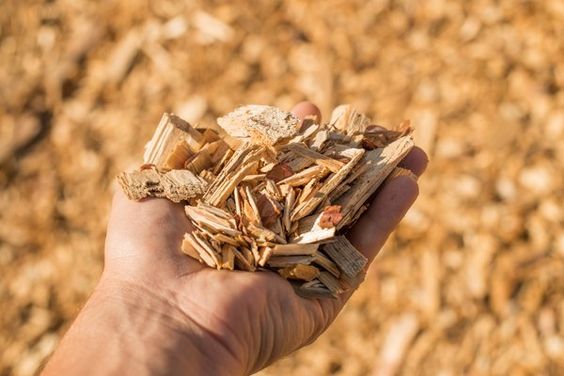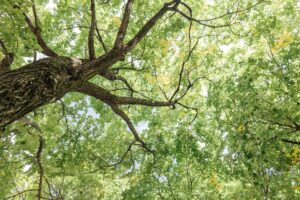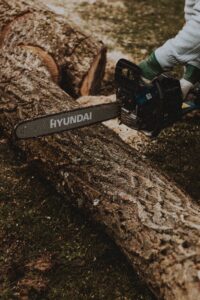What to Expect During a Tree Removal Process?
WHAT TO EXPECT DURING A TREE REMOVAL PROCESS?
Tree removal is the process of cutting down and completely removing a tree from its location. It’s a significant decision that should be made carefully, considering factors such as safety, aesthetics, property value, and environmental impact. Tree removal should ideally be conducted by trained professionals, such as certified arborists, to ensure the process is done safely and responsibly. Here’s a comprehensive discussion of tree removal:
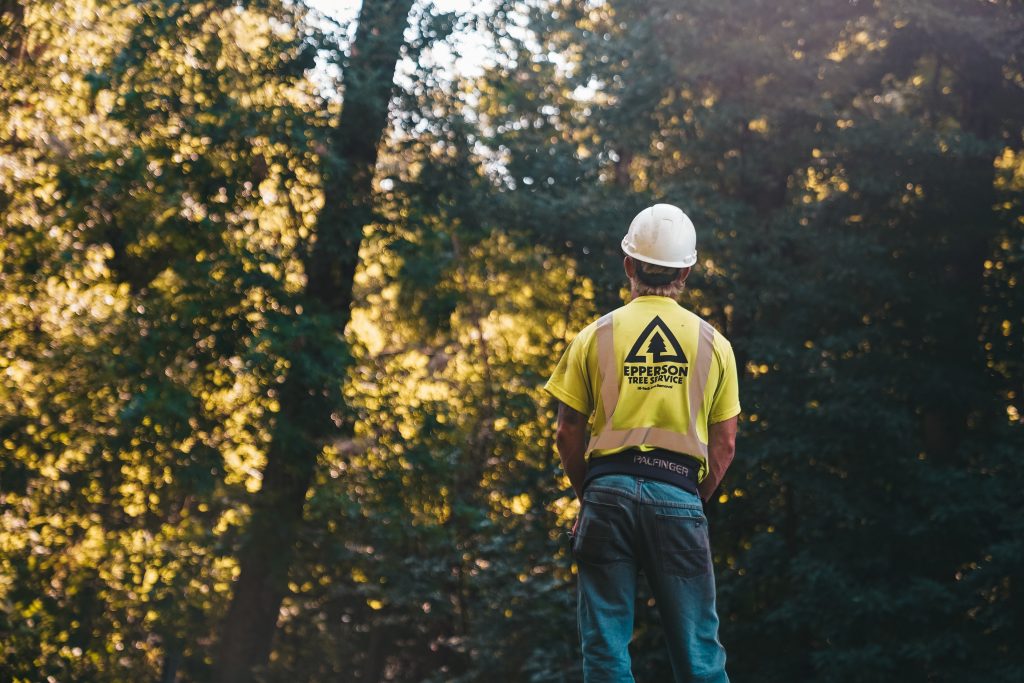
**1. Reasons for Tree Removal:
• Safety: Trees that are dead, dying, or structurally compromised pose safety risks. They can drop branches or even fall, causing damage or injury.
• Disease and Pest Infestation: Severely diseased or infested trees may need to be removed to prevent the spread of pests or diseases to nearby vegetation.
• Structural Issues: Trees with compromised structural integrity, such as those with significant lean or multiple trunks, might need removal to prevent hazards.
• Property Expansion or Development: When expanding or developing a property, certain trees may need to be removed to make space for construction.
• Aesthetic and Landscape Changes: Tree removal might be considered to enhance the visual appeal of the property or make way for new landscape features.
• Invasive Species: Removing invasive tree species helps protect the local ecosystem from their negative impact.
• Utility Interference: Trees growing close to power lines, buildings, or utility poles might need removal to avoid interference or safety hazards.
**2. Professional Assessment:
• Certified arborists or tree removal experts assess the tree’s condition, location, health, and potential risks before recommending removal.
• They consider alternative solutions, like pruning or cabling, if possible.
**3. Safety Precautions:
• Tree removal involves inherent risks due to falling debris and heavy equipment.
• Professionals follow safety protocols, use appropriate equipment, and sometimes employ rigging techniques to ensure safety.
**4. Environmental Considerations:
• When removing trees, their impact on the local ecosystem, air quality, and shade provision should be considered.
• Some tree removals may necessitate replanting to maintain ecological balance.
**5. Permits and Regulations:
• In some areas, specific permits or permissions may be required for tree removal, especially for protected or heritage trees.
• Professionals are familiar with local regulations and can assist in obtaining necessary permits.
**6. Tree Removal Process:
• The process typically involves cutting down the tree in sections, starting from the top and working downward.
• Techniques vary based on tree size, location, and surrounding structures.
**7. Stump Removal:
• After the tree is removed, property owners might choose to remove the stump as well, which can involve stump grinding or extraction.
**8. Post-Removal Care:
• After removal, professionals often offer services like debris cleanup, chipping, or even repurposing the wood for other uses.
**9. Property Impact:
• Removing a tree can impact property value and aesthetics. Careful consideration should be given to maintaining the landscape’s balance.
**10. Planting Replacement Trees:
• In some cases, it’s recommended to plant new trees to replace the removed ones, contributing to environmental sustainability.
In conclusion, tree removal is a significant step that requires thoughtful consideration of multiple factors. Engaging professional arborists or tree removal experts ensures that the process is done safely, responsibly, and in compliance with local regulations. When making the decision to remove a tree, it’s essential to weigh the benefits against potential impacts on safety, aesthetics, property value, and the environment.
The tree removal process involves the careful and systematic removal of a tree from its location. It’s a complex procedure that requires the expertise of trained professionals to ensure safety, efficiency, and minimal impact on the surrounding environment. Here’s an explanation of the typical tree removal process:
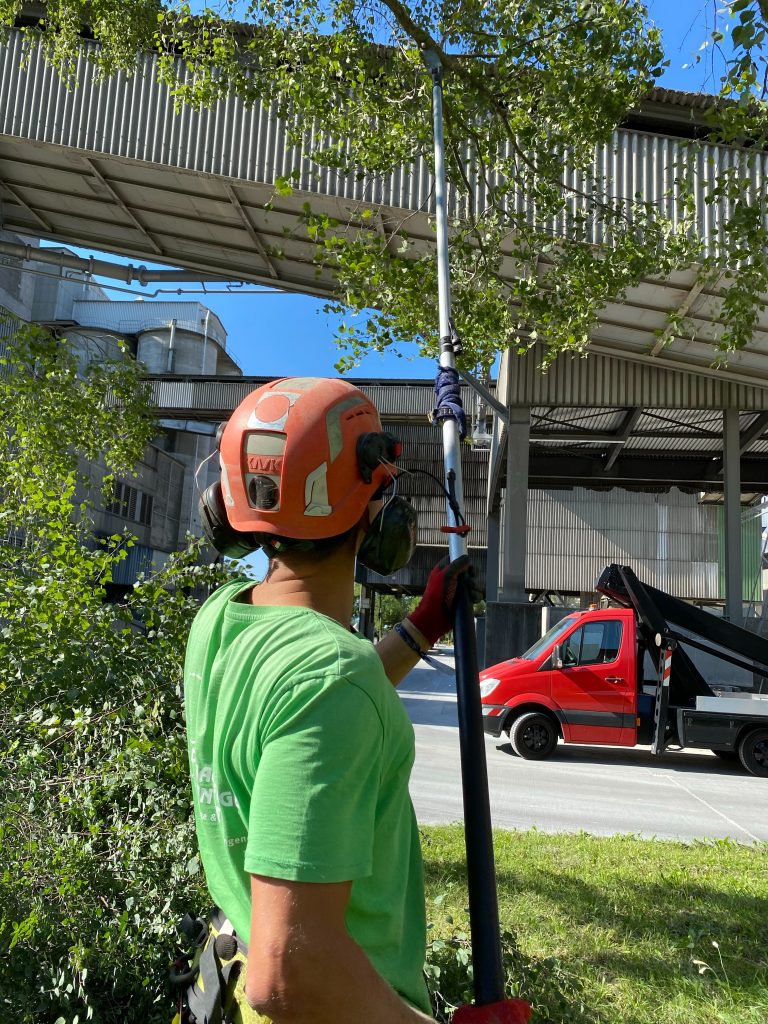
**1. Assessment and Planning:
• A certified arborist or tree removal expert assesses the tree’s health, structural integrity, location, and potential risks.
• They determine the best approach for removal and consider factors like nearby structures, utility lines, and the tree’s condition.
**2. Safety Preparations:
• Safety is paramount in tree removal. Professionals use personal protective equipment (PPE) and establish safety zones to prevent accidents.
**3. Equipment Setup:
• The removal team sets up the necessary equipment, including chainsaws, ropes, pulleys, rigging gear, and sometimes cranes for larger trees.
**4. Climbing or Aerial Work Platform (AWP):
• For trees that can be climbed safely, an arborist ascends the tree using ropes and harnesses.
• For larger trees, an aerial work platform might be used to access higher branches.
**5. Top-Down Removal:
• The removal process typically starts from the top of the tree.
• The upper branches are carefully removed, piece by piece, to prevent damage to structures and the ground below.
**6. Limbing and Sectioning:
• After the upper branches are removed, the main trunk is sectioned into manageable pieces.
• Each section is carefully lowered using ropes and rigging techniques to control its descent.
**7. Felling:
• If space allows and the tree’s condition permits, the tree might be felled (cut at the base) and allowed to fall under controlled conditions.
**8. Stump Removal:
• Once the tree is down, the stump can be removed through grinding or extraction, depending on the client’s preferences.
**9. Debris Cleanup:
• The removal team cleans up the debris, branches, and logs from the site, ensuring that the area is safe and free of debris.
**10. Disposal or Repurposing:
• The removed tree parts can be chipped for mulch, salvaged for firewood, or disposed of according to local regulations.
**11. Final Inspection:
• After the removal, the site is inspected to ensure that all debris has been properly cleared and the area is safe.
**12. Post-Removal Recommendations:
• Professionals might offer recommendations for replacing the removed tree with a suitable species or providing guidance on post-removal care.
**13. Environmental Responsibility:
• Responsible tree removal professionals consider the environmental impact and may suggest replanting or repurposing the removed tree parts.
It’s important to note that the tree removal process can vary based on factors such as tree size, location, species, and the expertise of the removal team. Engaging certified arborists or tree removal experts ensures that the process is conducted safely, with a focus on minimizing risks and potential damage to property and surroundings.
During a tree removal process, several steps are taken to ensure a safe and efficient removal while minimizing the impact on the surrounding area. Here’s what you can expect during a typical tree removal process:
**1. Initial Assessment:
• A certified arborist or tree removal expert evaluates the tree’s health, size, location, and potential risks.
• They discuss your concerns, preferences, and reasons for tree removal.
**2. Planning and Preparation:
• The removal team develops a removal plan based on the assessment, considering safety protocols and equipment needed.
• Safety zones are established to protect people and property during the process.
**3. Safety Precautions:
• On the day of removal, the removal team arrives equipped with appropriate safety gear, including helmets, harnesses, and eye protection.
**4. Equipment Setup:
• Tools such as chainsaws, ropes, rigging gear, and, in some cases, aerial work platforms or cranes are set up.
**5. Climbing or Aerial Work:
• If climbing is feasible, an arborist ascends the tree using ropes and harnesses.
• For taller or more challenging trees, an aerial work platform might be used to access higher branches.
**6. Top-Down Removal:
• The process usually starts with the removal of the upper branches.
• Each branch is carefully cut and lowered using ropes to prevent damage to nearby structures.
**7. Sectioning the Trunk:
• Once the upper branches are removed, the main trunk is cut into manageable sections.
• Each section is carefully lowered to the ground using controlled rigging.
**8. Felling (if applicable):
• If space and safety allow, the tree might be felled at the base and guided to a predetermined landing area.
**9. Stump Removal (optional):
• You can decide whether to remove the stump through grinding or extraction.
• Stump removal is an additional step after the main tree removal.
**10. Debris Cleanup:
• The removal team clears the site of branches, logs, and debris.
• They ensure that the area is safe and clean, minimizing any disruption to the surrounding environment.
**11. Final Inspection:
• The removal site is inspected to ensure that all tree parts have been removed, and the area is secure.
**12. Post-Removal Recommendations:
• Professionals might provide advice on replacing the removed tree, post-removal care, or addressing any concerns you have.
**13. Environmental Considerations:
• Responsible removal experts may discuss options for repurposing tree parts or planting replacement trees.
**14. Clear Communication:
• Throughout the process, communication between you and the removal team ensures that you’re informed and comfortable with each step.
**15. Completion and Cleanup:
• Once the removal is complete, the removal team ensures that your property is clean and safe.
Tree removal is a coordinated effort that prioritizes safety, efficient removal, and minimal disturbance to the surrounding environment. Hiring certified arborists or experienced removal professionals ensures a smooth process and a well-executed removal that meets your needs and expectations.
Safeguard mechanism During a Tree Removal Process
Ensuring safety is paramount during a tree removal process to prevent accidents, property damage, and injuries. Here are the key safeguard mechanisms that professionals implement to maintain a secure environment:
**1. Safety Gear and Personal Protective Equipment (PPE):
• Arborists and removal experts wear appropriate safety gear, including helmets, eye protection, hearing protection, gloves, and harnesses.
**2. Safety Briefing:
• Before beginning the removal, the team conducts a safety briefing to discuss roles, responsibilities, and emergency procedures.
**3. Safety Zones:
• Safety zones are established around the work area to prevent unauthorized access and protect bystanders from falling debris.
**4. Proper Equipment Use:
• Professionals are trained to use equipment such as chainsaws, ropes, and rigging gear safely and effectively.
**5. Stable Work Platforms:
• If climbing the tree, arborists ensure they have a secure foothold and are properly anchored to avoid falls.
**6. Communication Signals:
• Clear communication signals and protocols are established between team members to coordinate movements and actions.
**7. Rigging Techniques:
• Rigging techniques are employed to control the lowering of branches and sections, minimizing risks from falling debris.
**8. Aerial Work Platforms and Cranes:
• For tall or complex trees, aerial work platforms or cranes are used to ensure safe access to higher branches.
**9. Fall Zone Evaluation:
• The team evaluates the tree’s natural fall zone and ensures that it’s clear of obstacles, structures, and people.
**10. Emergency Procedures:
- A clear plan is in place for emergencies, such as equipment malfunctions or unexpected situations.
**11. Weather Considerations:
- The removal team monitors weather conditions to ensure that removal activities are carried out safely.
**12. Site Inspection:
- A thorough inspection of the site is conducted before and after removal to identify potential hazards.
**13. Ground Crew Coordination:
- Ground crew members coordinate with climbers to manage ropes, equipment, and communication.
**14. Environmental Protection:
- Efforts are made to minimize damage to surrounding vegetation and property during the removal.
**15. Public Awareness:
- If the removal site is near public areas, safety warnings and barriers are placed to keep the public at a safe distance.
**16. Post-Removal Cleanup:
- After the removal, the area is thoroughly cleaned to prevent tripping hazards or debris.
**17. Certified Professionals:
- Hiring certified arborists or experienced tree removal experts ensures that safety protocols are followed.
**18. Continuous Monitoring: – Safety measures are continuously monitored and adjusted as needed throughout the removal process.
By following these safeguard mechanisms, professionals ensure that tree removal is executed with the highest standards of safety. Prioritizing safety minimizes risks, safeguards property and people, and results in a successful and incident-free tree removal process.
About Murray, Utah
Murray is a city situated on the Wasatch Front in the core of Salt Lake Valley in the U.S. state of Utah. Named for territorial governor Eli Murray, it is the state's fourteenth largest city. According to the 2020 census, Murray had a population of 50,637. Murray shares borders with Taylorsville, Holladay, South Salt Lake and West Jordan, Utah. Once teeming with heavy industry, Murray's industrial sector now has little trace and has been replaced by major mercantile sectors. Known for its central location in Salt Lake County, Murray has been called the Hub of Salt Lake County. Unlike most of its neighboring communities, Murray operates its own police, fire, power, water, library, and parks and recreation departments and has its own school district. While maintaining many of its own services, Murray has one of the lowest city tax rates in the state.
Neighborhoods in Murray, Utah
Murray Oakes, Grant Park, Southwood Park, Murray Park, Murray Park Restrooms, Willow Pond Park, Neighborhood Veterinary Care
Things To Do in Murray, Utah
Bus Stops in Murray, Utah to Truco Services, Inc.
Bus Stop in Murray Central Station (Bay C) Murray, Utah to Truco Services, Inc.
Bus Stop in State St @ 4801 S Murray, Utah to Truco Services, Inc.
Bus Stop in Murray North Station Murray, Utah to Truco Services, Inc.
Bus Stop in State St @ 4949 S Murray, Utah to Truco Services, Inc.
Bus Stop in Murray Central Frontrunner/Trax Station Murray, Utah to Truco Services, Inc.
Bus Stop in Murray Blvd / Vine St (SB) Murray, Utah to Truco Services, Inc.
Bus Stop in State St @ 3925 S Murray, Utah to Truco Services, Inc.
Bus Stop in State St @ 4824 S Murray, Utah to Truco Services, Inc.
Bus Stop in State St @ 5223 S Murray, Utah to Truco Services, Inc.
Bus Stop in Murray Blvd / Allendale Dr (NB) Murray, Utah to Truco Services, Inc.
Bus Stop in Murray Blvd @ 5039 S Murray, Utah to Truco Services, Inc.
Bus Stop in State St @ 4721 S Murray, Utah to Truco Services, Inc.
Driving Directions in Murray, Utah to Truco Services, Inc.
Driving Directions from Woodruff Tree Trimming and Removal to 4640 Commerce Dr, Murray, UT 84107, USA
Driving Directions from Reliable Tree Care to 4640 Commerce Dr, Murray, UT 84107, USA
Driving Directions from Tree Pro-Tech to 4640 Commerce Dr, Murray, UT 84107, USA
Driving Directions from Prestige Tree And Landscape to 4640 Commerce Dr, Murray, UT 84107, USA
Driving Directions from Excellence Tree & Landscape to 4640 Commerce Dr, Murray, UT 84107, USA
Driving Directions from Amen Trees to 4640 Commerce Dr, Murray, UT 84107, USA
Driving Directions from Tim's Tree Care to 4640 Commerce Dr, Murray, UT 84107, USA
Driving Directions from Jordan Tree Service - Murray to 4640 Commerce Dr, Murray, UT 84107, USA
Driving Directions from Arbor Works to 4640 Commerce Dr, Murray, UT 84107, USA
Driving Directions from Diamond Tree Experts to 4640 Commerce Dr, Murray, UT 84107, USA
Driving Directions from Green Tree Arborist to 4640 Commerce Dr, Murray, UT 84107, USA
Driving Directions from TruCo Services to 4640 Commerce Dr, Murray, UT 84107, USA
Reviews for Truco Services, Inc. Murray, Utah
Emily Abercrombie
We had a great experience with TruCo! They were well priced, responsive and prompt. Michael was a pleasure to work with and gave us advice on which plants to put in where we took out our ugly old shrubs. I would highly recommend this company!!!
Michelle Turpin
TruCo Services gets 5 stars from us for customer service. We experienced a few issues with their services this last year and Rob Eccles in senior management, stepped in and immediately handled our issues. He was very committed to making sure they understood our expectations and would execute to make us happy.
Siobhan Billingsley
I work for a property management company and have the pleasure of working with Rob at a community in Sandy. He has been incredible to work with and always responds in a timely manner. He knows all the homeowners by name and address and is aware of all the "problem" areas when it comes to sprinklers. I never have to worry about following up with him because he always reaches out to provide me with an update. If you're looking to work with someone who takes pride in their job, is professional, and can solve the worst landscaping problems thrown your way, Rob is your guy. Thank you, Rob for all you do!
Jaime S.
We have used Truco at 2 of the complexes we manage, they have been great to work with. Good quality service, outstanding customer service with good communication. That's hard to find these days. I highly recommend them. Travis has been awesome to work with.
Jerusha Smart
We use TruCo for a majority of our properties and our home. While other landscaping companies we use come and go for various reasons like cost, communication issues, work performance, etc., TruCo is always consistent in price and work. Also, Rob is the best.
